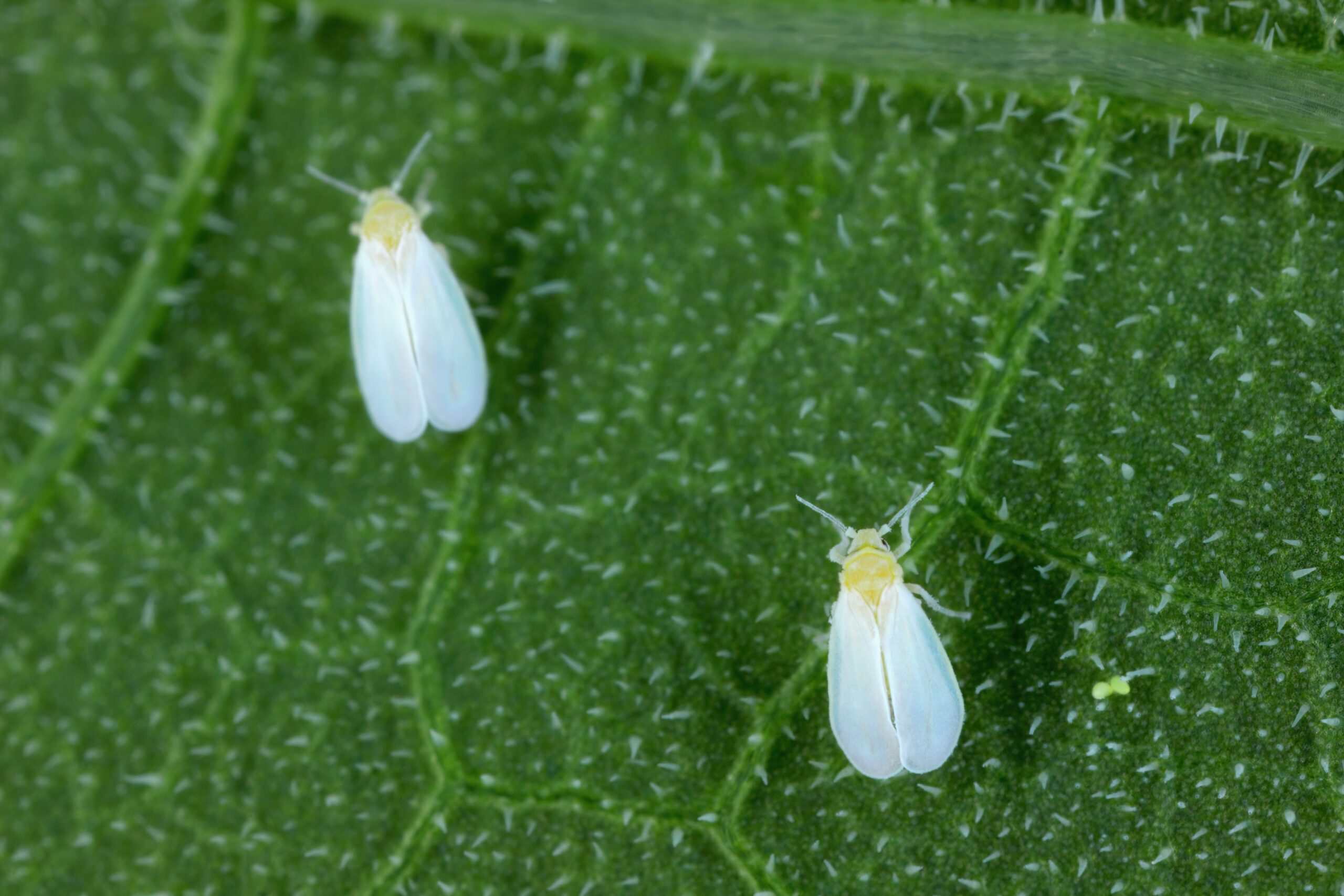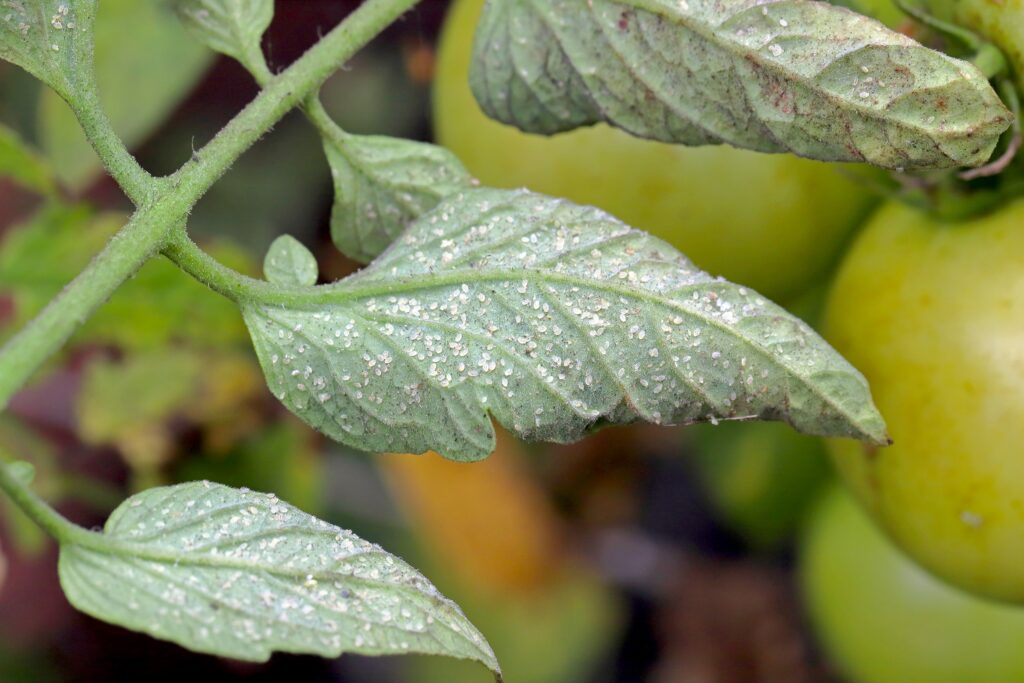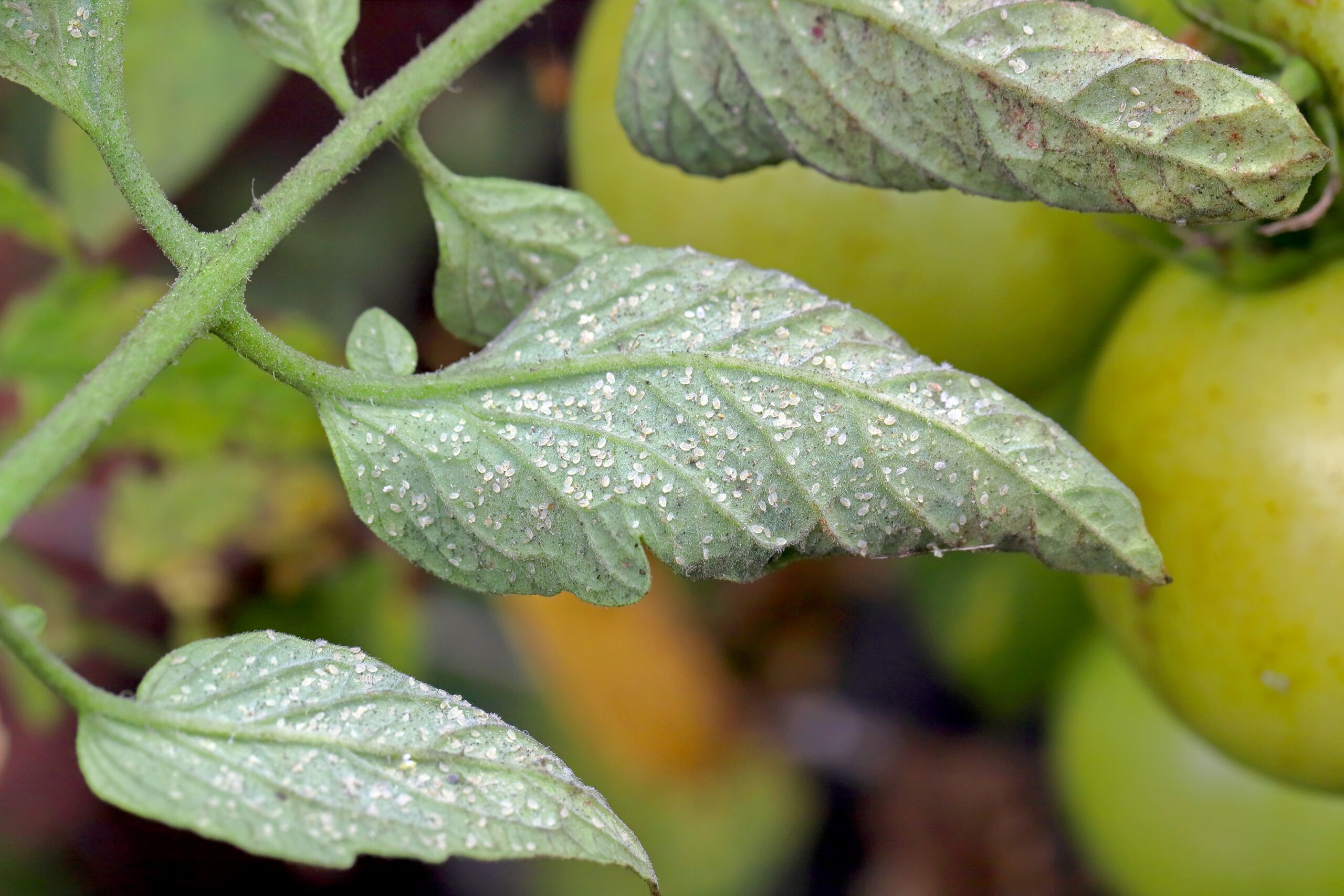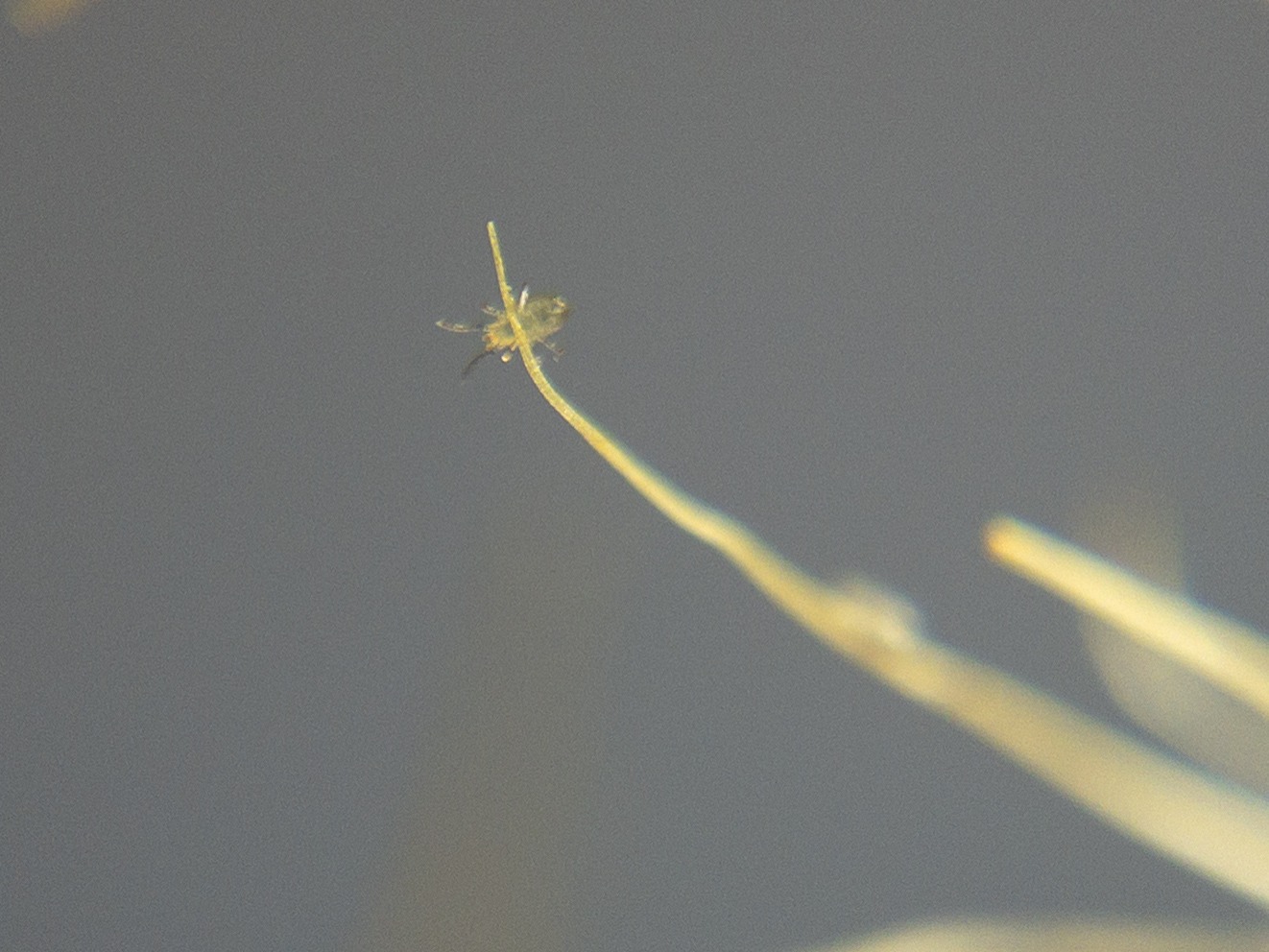Getting to Know Whiteflies: Tiny Troubles in Agriculture.
Effective Whitefly Control Solutions – PowerBugs Eco-Friendly Pest Management
Are you struggling with whiteflies in your horticultural projects?
Welcome to the PowerBugs Pest Page, your go-to resource for unravelling the complexities of whiteflies – not true flies, but formidable members of the order Hemiptera (true bugs). As part of the division Sternorrhyncha, alongside aphids and scale insects, whiteflies belong to the family Aleyrodidae. Let’s explore the fascinating world of these pests, focusing on the two most prevalent species: the greenhouse whitefly (Trialeurodes vaporariorum) and the tobacco whitefly (Bemisia tabaci).

Recognising Whitefly Infestations
Identifying Whiteflies
Physical Characteristics: Whiteflies are about 1 to 2 millimeters in size and have distinctive white wings. When disturbed, they fly in a characteristic zigzag pattern.
Life Stages: Whiteflies go through four stages: egg, nymph (crawler), pupa, and adult. The nymphs are flat, oval, and often found on the undersides of leaves. At 21ºC, the life cycle of the greenhouse whitefly unfolds as follows:
Species Variation: There are several species of whiteflies, with different appearances and behaviours. Common species include the greenhouse whitefly (Trialeurodes vaporariorum) and the silverleaf whitefly (Bemisia tabaci).
Understanding Whitefly Behavior
Whiteflies are known for their rapid reproduction and ability to transmit plant viruses. Understanding their behavior is crucial for effective control:
- Feeding Habits: Whiteflies feed on plant sap, piercing the leaves and excreting honeydew.
- Reproduction: Females can lay hundreds of eggs on the undersides of leaves.
- Transmission of Viruses: Whiteflies can transmit plant viruses, further damaging crops.
- Preferred Host Plants: Different whitefly species may have preferences for specific host plants.
Damage Caused by Whiteflies
Whiteflies can cause significant damage to plants:
- Yellowing Leaves: Feeding on plant sap leads to yellowing and weakening of leaves.
- Honeydew Residue: Whiteflies excrete sticky honeydew, which attracts sooty mold and other pests.
- Reduced Yields: Severe infestations can result in reduced crop yields and plant stunting.

Empower yourself against whitefly infestations. Choose PowerBugs pest control products.
Preventing Whitefly Infestations
Preventing Whitefly Infestations
- Monitor Plants: Regularly inspect plants for signs of whiteflies, including the undersides of leaves.
- Proper Plant Care: Maintain proper watering, fertilization, and pruning practices to keep plants healthy.
- Quarantine New Additions: Isolate new plants for a period to ensure they are not carrying whiteflies.
- Cleanliness: Keep the growing area clean by removing fallen leaves and debris
Our Solutions against whiteflies
Are you struggling with pests wreaking havoc on your crops?
Identify Your Pest


PowerBugs Predatory Mite at Work

Typhlodromips montdorensis, answer your pest problems. These tiny warriors are nature’s allies, and they’re here to protect your plants. Their efficacy has been well-documented over decades, making them a cornerstone of eco-friendly pest control in various agricultural settings.
Quick and Effective
Predatory Mites
This week’s popular products against whiteflies
Don’t let whiteflies harm your precious plants. Contact PowerBugs today for expert whitefly control solutions and keep your green spaces thriving.
Resources on Whiteflies
- Green Harvest – Whitefly Organic Control Information: This site describes the physical characteristics of whiteflies and their lifecycle, and highlights various biological controls, including natural predators and the use of Encarsia formosa, a parasitic wasp. Learn about organic control
- Agriculture Victoria – Silverleaf Whitefly: This government site provides detailed information on the silverleaf whitefly, a common pest in Australia. It covers the life cycle, host range, and the damage caused by this pest, along with control strategies. View Agriculture Victoria’s information
- Business Queensland – Silverleaf Whitefly: This resource offers extensive information on the life history, distribution, host range, and damage caused by the silverleaf whitefly in Queensland, Australia. Business Queensland’s Whitefly Information
FAQs About Whiteflies
How can I identify a whitefly infestation?
Look for tiny, white-winged insects about 1 to 2 mm in size, often found on the undersides of leaves. Signs include a zigzag flight pattern when disturbed, yellowing leaves, and sticky honeydew residue.
What damage do whiteflies cause?
Whiteflies sap feed from plants, leading to yellowed, weakened leaves, and excrete honeydew, encouraging sooty mold growth. Severe infestations can reduce crop yields and stunt plant growth.
How can whitefly infestations be prevented?
Regularly inspect plants, especially the undersides of leaves, maintain healthy plant care practices, quarantine new plants, and keep the growing area clean by removing debris.
What are PowerBugs' solutions against whiteflies?
PowerBugs offers eco-friendly, biological control options like Typhlodromips montdorensis, a predatory mite that targets whiteflies, providing a sustainable alternative to chemical pesticides.
Are there organic controls for whiteflies?
Yes, organic options include introducing natural predators such as Encarsia formosa, a parasitic wasp, and implementing integrated pest management (IPM) practices that focus on prevention and natural controls.
Can whiteflies transmit diseases to plants?
Yes, whiteflies are capable of transmitting various plant viruses, exacerbating the damage they cause to agricultural and horticultural crops.
What are some effective cultural practices against whiteflies?
Effective practices include removing infested leaves, using reflective mulches to deter whiteflies, implementing proper irrigation and fertilisation to strengthen plants, and avoiding excessive nitrogen, which attracts whiteflies.
How do temperature and climate affect whitefly populations?
Whiteflies thrive in warm conditions, with their life cycle accelerating in warmer temperatures. Monitoring and managing populations become increasingly important in hot climates to prevent rapid infestations.
How can I get more help with whitefly control?
For more personalised advice and solutions, contact PowerBugs directly. Our experts are ready to assist with your whitefly control needs, offering guidance on the best products and practices for your specific situation.
GET IN TOUCH
Discover the Future of Agricultural Pest Control Solutions
At PowerBugs, we’re not just selling products; we’re offering a sustainable and eco-friendly solution to pest control. Join us in making a positive change in the world of agriculture. Explore our range of beneficial mites today and take the first step towards a greener and more prosperous future.
